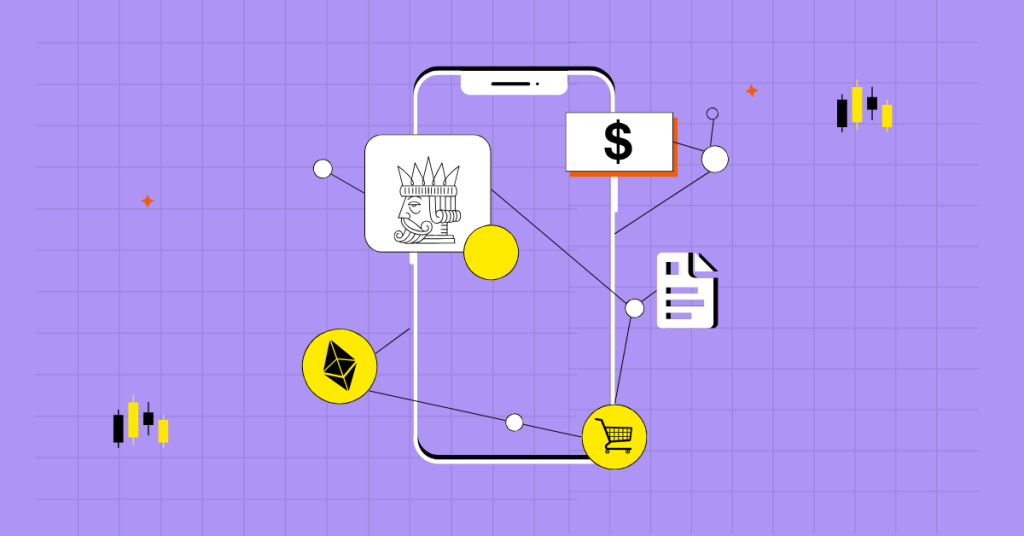The post What Is Decentralized Physical Infrastructure Networks (DePINs)? appeared first on Coinpedia Fintech News
Decentralized physical infrastructure networks (DePINs) signify the application of blockchain technology and decentralized principles to physical infrastructure and systems. For instance, in the case of Swiggy, a sharing economy model is in place! All the restaurants, as contributors to their services, are centrally controlled.
A central authority controls the orders/ pick-ups of all the restaurants. In the case of using DePINs, the system can be a decentralized blockchain network. Here, the reward structure becomes fairer and more inclusive!
Isn’t this new perspective effective in transforming our current situation? Let us delve into the world of DePINs and understand the basics of how DePINs work!
Introduction To DePINs
In the era of blockchain, our digital landscape has undergone a radical transformation, reshaping how we engage with technology. From the realms of decentralized finance (DeFi) to the vibrant world of NFTs, decentralization has not only redefined the digital arena but has now extended its reach to the physical world through the advent of DePINs.
- DePINS allow autonomous, real-time interactions in physical space through technologies like smart contracts and the Internet of Things.
- It increases system responsiveness and adaptability to human needs.
- DePINs leverage blockchain technology to work on the security, efficiency and transparency in physical systems, such as renewable energy grids and supply chain operations.
- DePINs can provide unchangeable records of product provenance in supply chain management, ensuring authenticity from manufacturing to delivery.
- For example, Blockchain technology can allow peer-to-peer energy trading in the energy distribution space. It can decentralize access to energy resources by enabling solar-panelled homes to sell the excess to nearby households.
- Projects like Power Ledger and OpenBazaar laid the foundation of this concept by demonstrating how blockchain can decentralize energy distribution and e-commerce.
So, How Do DePINs work?
At their core, DePINs utilize blockchain to distribute authority and management across a network, breaking away from centralized control. Operating in domains ranging from energy trading to supply chain management, telecommunication, and data storage, they showcase versatility.
Imagine a DePIN application in the energy sector, reshaping the traditional energy grid. Picture individual solar-paneled spaces generating electricity and seamlessly selling surplus energy to the grid or neighboring areas. Blockchain records every transaction, ensuring transparency, while smart contracts automate the tracing and exchange of excess energy, ensuring system efficiency and reliability.
The decentralized model promotes the utilization of renewable sources of energy and creates a more sustainable environment by putting no pressure on large, centralized power facilities.
DePINs span across four major categories:
- Cloud Storage Networks: Including CDN and VPN networks.
- Wireless Networks: Encompassing technologies like 5G.
- Sensor Networks: Involving devices embedded with sensors collecting real-time data, like maps.
- Energy Networks: Creating resilient and efficient energy grids.
Now, let’s unravel the significance of DePINs and why they are crucial in the evolution of decentralized systems.
Why DePINs?
DePINs have a grand vision of transforming the landscape of infrastructure networks, aiming for a more equitable and efficient process. The benefits of embracing DePINs are manifold:
- Accelerated Infrastructure Development:
- DePINs enable the construction of infrastructure at a pace 10-100 times faster.
- Hyper-local Market Alignment:
- Better synchronization with hyper-local market needs, ensuring a more tailored approach.
- Cost-effectiveness:
- Significantly more cost-effective solutions compared to traditional methods.
- Scalability Across Jurisdictions:
- Permissionless scaling across jurisdictions, fostering a globalized and accessible network.
- Credibly Neutral and Collective Ownership:
- Establishment of a network that is both credibly neutral and collectively owned.
- Blockchain Advantage:
- Blockchain technology provides an edge, particularly in micropayments and seamless DeFi integration.
The fundamental concept driving DePINs is to disrupt conventional methods, ushering in operational ease and putting the power directly into the hands of individuals. Picture this: if you have surplus storage on your computer, you can monetize it by offering extra space to others. It’s a flywheel concept, providing utilities directly to end-users.
Features Of DePINs
While DePINs present a promising future, certain limitations need acknowledgement:
- Vulnerability to Hacks and Bugs:
- The system is susceptible to potential hacks and bugs.
- Token Price Volatility:
- Unfavorable token price volatility can adversely affect the stability of DePINs.
- Service Quality Comparison:
- Nascent DePINs may struggle to match the service quality of traditional centralized entities.
- Technical Expertise Requirement:
- Operating in the decentralized world demands a certain level of technical expertise.
Use Cases
Here are some pioneering DePIN projects making waves in 2024:
- Filecoin
Filecoin or FIL uses the interplanetary file system for a decentralized storage solution, rewarding node providers with FIL currency for providing disk space. It is a marketplace where users buy storage from various contributors who meet the quality standards. Contributors earn FIL by assigning disk space with rewards increasing over time, all because of Filecoin’s proof-of-spacetime algorithm.
The Filecoin token, FIL, is doing well and is predicted to increase by 5.13% in February 2024. Experts predict that it might touch the $10 mark in 2025. It is currently trading at $8.04 and after Solana integration, it might touch $10 soon.
- Render
RNDR token has become the talk of 2024 as its price surged 1,540% since 2023. It is capitalizing on the current hush-hush for AI and generative content. It is currently trading at $7.76 and is expected to grow during the 2024 bull run. The Render Network is a decentralized GPU rendering platform that enables artists to dynamically expand their GPU rendering capacities across global high-performance nodes.
It boasts of a broad spectrum of computational tasks, from rendering to machine learning and complex calculations, via a faster, more efficient, and error-free blockchain-based peer-to-peer network that also secures property rights. Leveraging Solana, the Render team introduced the RENDER token, rewarding community members who contribute their GPU resources. Participants were allocated 1.14 million RNDR tokens for their contributions and to cover migration and gas fees from Ethereum to Solana.
- Helium
Helium is renowned for reshaping IoT connectivity with its decentralized blockchain network, allowing individuals to deploy Hotspots that enhance wireless coverage and mine HNT cryptocurrency. These Hotspots, leveraging Helium LongFi, extend connectivity well beyond traditional Wi-Fi, supporting a diverse array of IoT applications at reduced costs. With its Proof of Coverage algorithm, Helium rewards contributions to network growth and data transmission.
Helium boasts over 88,000 Hotspots in 8,000 cities and expanding into Helium 5G, Helium is at the forefront of building a next-generation wireless infrastructure, fostering a robust ecosystem of developers, manufacturers, and IoT applications. This innovative approach offers a scalable, cost-effective, and secure alternative to conventional internet services, marking a step forward in IoT deployment and wireless access.
Final Thoughts
As DePINs continue to evolve, the future seems optimistic for the new category. From optimizing resource utilization in energy distribution and other spaces to democratizing access to important services like healthcare, the potential impact is DePINs is gaining popularity. It is still fresh among stakeholders. Therefore, it is facing certain challenges in proving its potential. However, with the right framework in place, DePINs can transform the world for the better by empowering individuals to shape the future of infrastructure in a decentralized and sustainable way!
Changing the Future
In conclusion, DePINs represent a paradigm shift in infrastructure development. Leveraging blockchain technology, they empower individuals to contribute their resources and be rewarded for it, fostering a more equitable and efficient system. While challenges remain, DePINs’ potential is undeniable, offering a glimpse into a future where infrastructure is built and managed by the people, for the people.
As DePINs evolve and overcome hurdles, their impact is poised to transform various industries, paving the way for a more sustainable and collaborative future for infrastructure.

